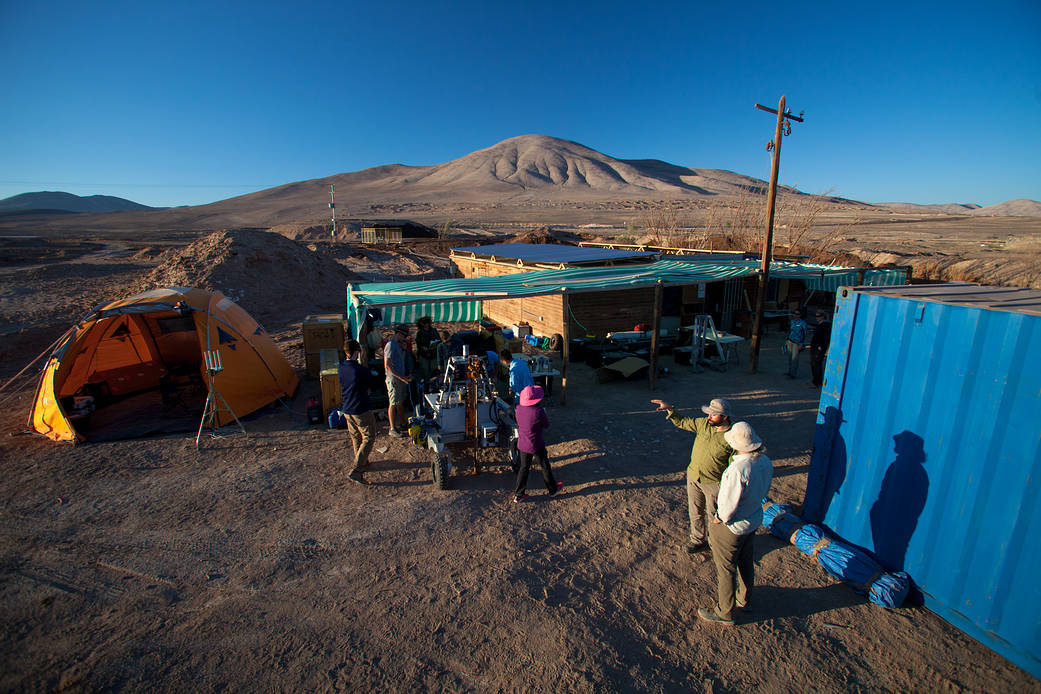The ARADS team’s base camp in the Atacama Desert includes a simple structure where team meetings are held, science samples are stored, computers charged and meals served. Electricity and running water are available out here, one hour and twenty minutes’ drive from the nearest city of Antofagasta, because mining for salt and nitrates happens nearby. With water heated only by the sun, showers are possible, but uninviting. The scientists, engineers and logistics team members rough it together for one month of testing the ARADS rover and life-detection instruments.
+++
The Atacama Rover Astrobiology Drilling Studies, or ARADS, project is designing tools and techniques that could be used to search for life one day on Mars or other places in the Solar System. The team’s prototype rover combines the ability to move across the surface, drill down to collect soil samples, and feed them to several life-detection instruments on board. The extreme conditions of Chile’s Atacama Desert provide one of the most Mars-like environments on Earth, where the team can test and refine these technologies and methods.
ARADS is led by NASA’s Ames Research Center in California’s Silicon Valley. Partners include NASA centers Goddard Space Flight Center in Greenbelt, Maryland, and the Jet Propulsion Laboratory in Pasadena, California, as well as Johns Hopkins University in Baltimore, Maryland, Honeybee Robotics in New York, the University of Antofagasta and CampoAlto SpA, both in Chile, and Spain’s Center for Astrobiology.
Credit: NASA/CampoAlto/Victor Robles





























